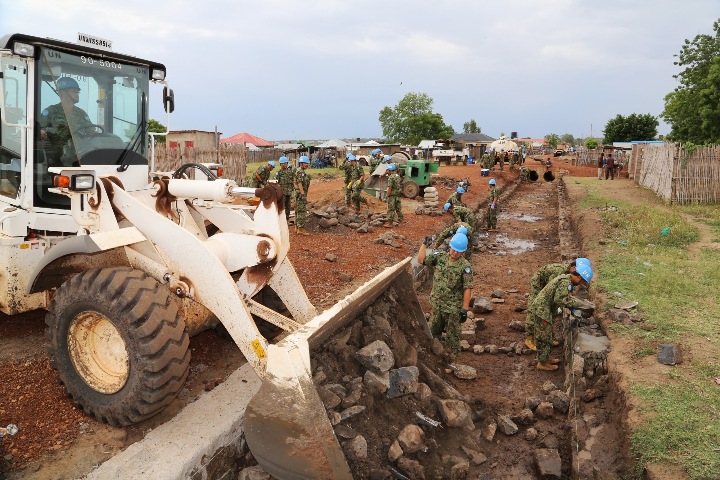South Sudan awaits peace and development on the ground after inking truce on paper
Investment in infrastructure particularly in road and transport is imminent to turn around the fate of South Sudan.

South Sudan, the youngest nation of the world that came into existence in 2011, is still waiting for peace and development despite finally inking truce on paper in 2018. Although complete peace still eludes the African nation the development work and achievement of sustainable development goals in no conflict regions is also a great challenge.
In a recent study by the United Nation office for coordination of humanitarian aid (OCHA), it was reported that the life-saving assistance was needed for about 7 million people out of 11 million population in the country. The rural population in South Sudan is as high as 81% while merely 19% of people live in the urban areas that too are struggling for basic amenities of life. Along with long term conflicts (civil war), poor seasonal rain also resulted in less agricultural productivity. This low productivity has finally resulted in an insufficient supply of food causing rising food prices in the African nation. According to a recent study; Global report on food crisis 2019 by the Food Security Information Network (FSIN), the prices of the food are three times as compared to the prices of food in 2017. Due to poor access to healthy nutrition in South Sudan, about 860000 children under the age of five are malnourished. And about 40 percent of the population is displaced internally and externally due to the crisis. Besides, only one out of 10 people have access to a basic sanitation facility. The heavily damaged due to the violent struggle for independence, South Sudan was forced for another round of civil war within two years of its existence. After a long time of conflicts (civil war), warring leaders (rebels) finally agreed to sign a peace agreement in 2018 with the government. Although reduced the conflicts or fighting still exist in most of the part of South Sudan.
In a study in 2018, Aid Worker Security Report has noticed that in 2017, almost 313 aid workers faced about 158 major incidents of violence in 22 countries including Syria, Afghanistan, Nigeria, Somalia, etc. And about 33 percent of these incidents were reported from South Sudan. Aid workers or humanitarian activists were facing conflict setting like kidnapping, shooting, assaulting, gang rape, etc. Besides, the conflict and criminal activities, road connectivity is also a major challenge to deliver aid. WHO had also expressed concerns in 2017, on unfavourable weather conditions like heavy rains and floods, due to which roads are washed away causing severe transport problems. It was also reported that a huge portion of around 70% of South Sudan is inaccessible due to bad conditions of the road. Due to damaged conditions of roads, NGOs have to rely on air travel to deliver aid. Thus delivering aid is highly expensive for NGOs.
It depends on the sustainability of the peace agreement that how long it sustains. Lack of trust between parties leads to the unsustainability of the agreement. If it sustains, there will be a lot of opportunities for development in the due course of time for a nation where the investment is necessary. Adequate security for the aid workers, development professionals and investors are also pre-requisite for development in the nation. The geographical terrain of South Sudan is in poor condition but investing in the transport sector would give wider benefits and contribute positively to the development of the country. Investing in infrastructure will be a boosting step for injecting cash employment. As per media reports around 70 percent of the population is under 30 and most of them are uneducated and unskilled. Here, large scale infrastructure projects will give gainful employment to the youths. The investment in infrastructure projects had been a time trusted economic activity as it had provided 30% more employment in North Africa and the Middle East in 2000.
The employment would also help in reducing conflict as youth will be engaged in planned economic activities. These breadwinners would also be able to provide better food, health, and education to their children that is imminent for achieving SDGs. Also, it will help in ensuring a safe working environment for aid workers and also in reducing humanitarian funding. Even the areas of no-conflict, the problems of orphaned children, maimed and handicapped people are also a liability on resources to which the solution needs to find out.
- FIRST PUBLISHED IN:
- Devdiscourse News Desk
ALSO READ
Palestinians want April vote on UN membership despite US saying peace with Israel must come first
Russian minister casts prospective Ukraine peace talks as Western plot to win hesitant Global South
Spain's PM visits Francoist mausoleum to learn about civil war exhumations
Stories from the UN Archive: Greatest of All Time fights for peace
Support for Ukraine key to restoring peace in Europe, Germany's Scholz says










